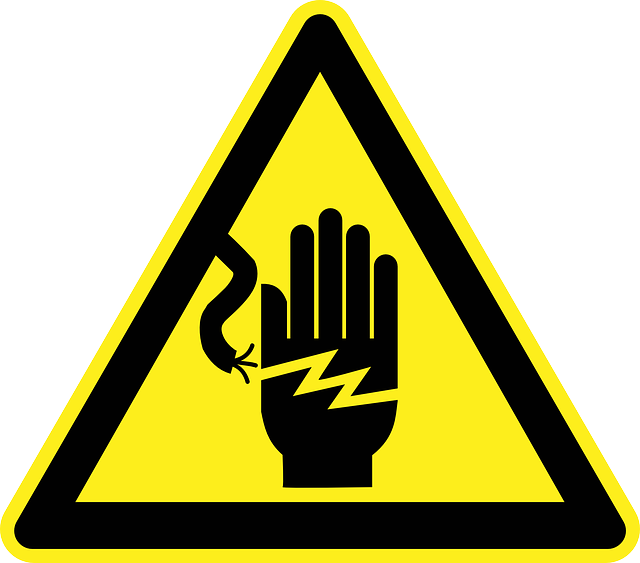Water damage can wreak havoc on a property, affecting not only the structure but also the electrical systems within. When water infiltrates electrical components, it poses significant risks, including electrocution, fire hazards, and equipment malfunction. Disturbingly, statistics reveal that Americans waste approximately 1 trillion gallons of water every year due to various causes such as leaky pipes, faucets, sprinkler systems, and other factors. In this piece, we’ll look at how water damage to electrical systems can adversely affect your home.

This staggering amount of wasted water emphasizes the urgent need for efficient water management practices to reduce the risk of water damage and its detrimental consequences on electrical systems.
The impact of water damage to electrical systems can be severe. So we will delve into the potential risks associated with water damage to electrical systems and explore effective solutions for mitigating these dangers.
Understanding the Risks
1. Electrocution Hazards
When water comes into contact with electrical components, the potential for electrocution becomes a grave concern. Water, being an excellent conductor of electricity, drastically increases the risk of electrical shocks, even in the presence of small amounts of moisture.
The combination of water and electricity creates a hazardous situation where any contact with live wires or electrical equipment in wet conditions can result in severe injuries or, tragically, even fatalities.
The human body is particularly vulnerable to electrical shocks, and the presence of water amplifies this danger, making it imperative to exercise extreme caution and prioritize safety when dealing with electrical systems in wet environments.
2. Fire Hazards
Water damage can compromise the insulation on electrical wiring, causing exposed wires and creating a fire hazard. Additionally, when water reaches electrical panels or circuit breakers, it can cause short circuits or overload circuits, leading to sparks and potentially igniting a fire.
Startling statistics from 2021 indicate that there were approximately 24,200 residential building fires attributed to electrical malfunctions, resulting in a devastating toll of 295 fatalities and approximately 900 injuries.
3. Equipment Malfunction
Water infiltration into electrical equipment such as switches, outlets, and appliances can disrupt their normal functioning. Statistics indicate that around 37% of homeowners have reported suffering losses from water damage.
When moisture enters electrical equipment, it can corrode internal components, leading to malfunctions, tripped breakers, or even complete failure. This not only hampers the performance of the equipment but also significantly increases the risk of fire or electrical accidents.
Solutions for Mitigating Water Damage Risks
1. Immediate Response to Water Intrusion
In the event you encounter water damage to electrical systems, it’s crucial to act swiftly. Cut off the power supply to the affected areas by switching off the main circuit breaker. Avoid handling electrical equipment or components when standing in water, as this increases the risk of electrocution. Contact a professional water damage restoration company that specializes in handling water-related electrical issues.
2. Ensure Proper Installation
Proper installation of electrical systems is crucial to minimize water damage risks. All electrical outlets, switches, and components should be installed at safe heights, keeping them above potential flood levels. Ground fault circuit interrupters (GFCIs) should be installed in areas prone to moisture, such as kitchens, bathrooms, and outdoor spaces, to prevent electrical shocks.
3. Implement Effective Waterproofing Measures
To protect electrical systems from water damage, it’s essential to implement effective waterproofing measures. This includes sealing entry points around electrical conduits, cables, and junction boxes to prevent water from seeping in. Additionally, installing waterproof covers or enclosures for outdoor electrical components helps shield them from moisture exposure.
4. Regular Inspections and Maintenance
PuroClean notes that routine inspections are vital for identifying potential water damage risks in electrical systems. Regularly check for signs of water intrusion, such as dampness, discoloration, or corrosion around electrical outlets and panels. Promptly address any issues to prevent further damage and ensure the safe operation of electrical systems.
5. Elevate Electrical Components
When possible, elevate electrical panels, switches, and outlets above flood-prone areas. This prevents direct exposure to water during flooding incidents. Consult with a qualified electrician to assess your property’s vulnerability to flooding and determine the best elevation strategies.
6. Professional Evaluation and Restoration
For comprehensive assessment and restoration of water-damaged electrical systems, it’s recommended to seek the expertise of licensed electricians and water-damage restoration professionals. They have the knowledge, tools, and experience to safely restore electrical systems, mitigate risks, and ensure compliance with electrical codes and safety standards.
Understanding Water Damage Coverage
If you have home insurance, it’s important to understand that you can file a claim for sudden water damage, which is typically covered by insurance policies. According to statistics, About 29.4% of home insurance claims are due to water damage, with the average claim amounting to $11,098.
But remember, insurance might not cover water damage if it’s caused by neglect or lack of maintenance. It’s important that the damage was unexpected and accidental to be eligible for coverage.
Conclusion
Water damage poses significant risks to electrical systems, making it crucial for us to remain vigilant and take appropriate measures. Regular monitoring of water damage near electric circuits and equipment, along with prompt action, can help safeguard our homes, businesses, and lives from the potential dangers that arise.
By adopting proactive steps and prioritizing the protection of our electrical systems, we can mitigate risks, prevent accidents, and ensure the continued safety and functionality of our properties.



